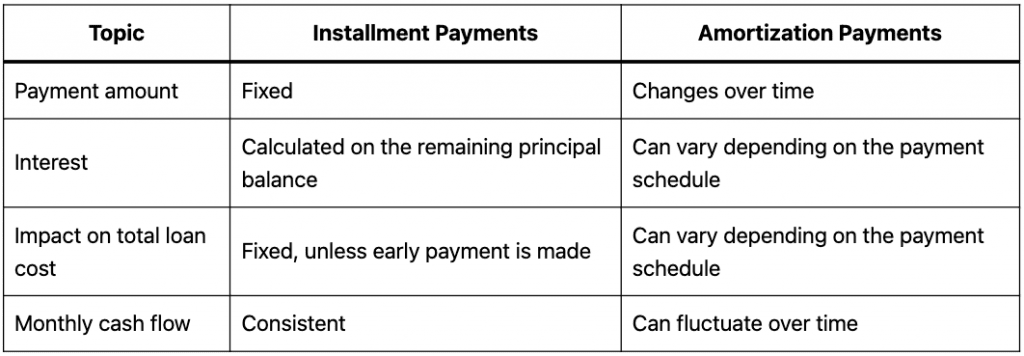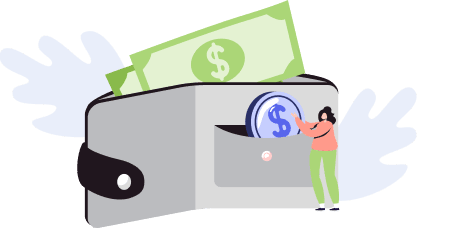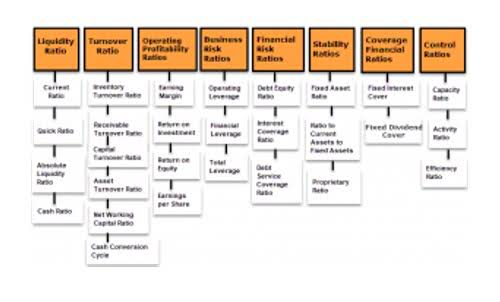MVE is driven by investor sentiment, expectations of future earnings, and overall market conditions. As a result, MVE can differ significantly from BVE, especially for companies with strong brand recognition or high growth potential in industries like technology or pharmaceuticals. First, we’ll go over the components of the first formula (Assets – Liabilities).
Shareholders equity calculation example
Now, we’re going to review the components for the formulas (assets, liabilities, common shares, preferred shares, paid-in-capital, and retained earnings). It is a financial document that a company issues as part of its balance sheet, and it gives investors information about why accounts have changed. Its current liabilities, which included accounts payable, deferred revenue, and most debt, amounted to $137.3 billion.
- While the issued share capital will depend on the financing requirements and capital structure decisions of a company.
- Preferred stocks and preferred shares refer to the same thing—they are interchangeable terms.
- We have financial relationships with some companies we cover, earning commissions when readers purchase from our partners or share information about their needs.
- After the repurchase of the shares, ownership of the company’s equity returns to the issuer, which reduces the total outstanding share count (and net dilution).
By submitting this form, you consent to receive email from Wall Street Prep and agree to our terms of use and privacy policy. But an important distinction is that the decline in equity value occurs due to the “book value of equity”, rather than the market value. David is comprehensively experienced in many facets of financial and legal research and publishing. As an Investopedia fact checker since 2020, he has validated over 1,100 articles on a wide range of financial and investment topics.
The share capital represents contributions from stockholders gathered through the issuance of shares. It can reveal whether your business didn’t generate enough income to sustain operations or whether you have enough equity to weather a downturn. The statement also shows whether you’re likely to get approved for a business loan, whether there’s value in selling the business and whether it makes sense for investors to contribute. Businesses of all sizes use the statement of shareholders’ equity (or owners’ equity if the business isn’t public).
FAQ: Shareholders’ Equity
Total liabilities are obtained by adding current liabilities and long-term liabilities. Shareholders’ equity can also be calculated by taking the company’s total assets less the total liabilities. The account demonstrates what the company did with its capital investments and profits earned during the period. When the balance sheet is not available, the shareholder’s equity can be calculated by summarizing the total amount of all assets and subtracting the total amount of all liabilities.
To avoid misunderstanding later while searching for these financial statements, the header of Statement Of Shareholder Equity should include the firm name, the title of the statement, and the accounting period. Treasury shares are still counted as issued shares, but they are not considered outstanding and so are not included in dividends or earnings per share (EPS) calculations. When a company needs to acquire extra capital, Treasury shares can always be reissued to investors for purchase. If a firm does not want to keep the shares for future financing, it can retire them.
- The “Treasury Stock” line item refers to shares previously issued by the company that were later repurchased in the open market or directly from shareholders.
- When calculating the shareholders’ equity, all the information needed is available on the balance sheet – on the assets and liabilities side.
- A summary report called a statement of retained earnings is also maintained, outlining the changes in retained earnings for a specific period.
- The statement of shareholders’ equity gives investors a much better understanding of how the individual equity accounts have changed during the period.
- If this value is negative, it may signal that the company is about to file for bankruptcy, especially if it has a substantial debt liability.
“It tells shareholders the direct financial impact of the business’s operations and policies on their ownership stake and how their claim of the company’s value has changed,” Pack added. A statement of shareholders’ equity is helpful for gauging how well the business owner is running the organization. Gregor outlined how to gauge business success when reviewing a statement of shareholders’ equity. With various debt and equity instruments in mind, we can apply this knowledge to our own personal investment decisions. Although many investment decisions depend on the level of risk we want to undertake, we cannot neglect all the key components covered above.
Treasury stocks are repurchased shares of the company that are held for potential resale to investors. It is the difference between shares offered for subscription and outstanding shares of a company. This simple equation does a lot in demonstrating that shareholder’s equity is the residual value of assets minus liabilities. Throughout statement of stockholders equity formula this series on financial statements, you can download the Excel template below for free to see how Bob’s Donut Shoppe uses financial statements to evaluate the performance of his business. It is one of the four financial statements that need to be prepared at the end of the accounting cycle. If the same assumptions are applied for the next year, the end-of-period shareholders equity balance in 2022 comes out to $700,000.
This helps stakeholders understand how profits are retained, dividends are distributed, and equity capital is managed, thereby facilitating informed investment and management decisions. Common OCI components include unrealized gains and losses on investments, foreign currency translation adjustments, and changes in the value of pension plans. OCI allows stakeholders to better assess the company’s overall financial health and performance. An accumulated deficit, also known as a retained earnings deficit or accumulated loss, occurs when a company’s cumulative losses and dividend payments exceed its cumulative profits. Additional paid-in capital (APIC) is the amount of money investors pay for a company’s stock above its par value. In other words, it represents the excess of the issue price over the nominal or par value of the shares.
For example, if a company has $80,000 in total assets and $40,000 in liabilities, the shareholders’ equity is $40,000. In both prosperous and challenging times, small business owners must understand how their business is faring over a specific period. Let us consider an example of a company PRQ Ltd to compute the Shareholder’s equity. Based on the information, calculate the Shareholder’s equity of the company.
As stockholders, investors contribute their share of (paid-in) capital, which is the primary source of total stockholders’ equity. An investor’s paid-in capital is a component in establishing his or her ownership percentage. Many businesses all over the world have found the last two years challenging. It can also help directors to make decisions about whether they have the stability to borrow money or whether it’s a good time to consider selling. A statement of shareholders’ equity also can be useful for investors who want more information about a single component of the company’s ownership.
Components of shareholders’ equity
The actual number of shares issued (also called issued share capital) will not be more than the authorized share capital. The authorized capital is the total number of shares a company is legally authorized to issue as per the company’s own articles of association. While the issued share capital will depend on the financing requirements and capital structure decisions of a company. The stockholders’ equity is only applicable to corporations who sell shares on the stock market.
The above given is the data for calculating the Shareholder’s equity of company PRQ Ltd. My Accounting Course is a world-class educational resource developed by experts to simplify accounting, finance, & investment analysis topics, so students and professionals can learn and propel their careers. Shaun Conrad is a Certified Public Accountant and CPA exam expert with a passion for teaching. After almost a decade of experience in public accounting, he created MyAccountingCourse.com to help people learn accounting & finance, pass the CPA exam, and start their career.
What Is the Statement of Shareholders’ Equity?
To arrive at the total shareholders’ equity balance for 2021, our first projection period, we add each of the line items to get to $642,500. From the beginning balance, we’ll add the net income of $40,000 for the current period, and then subtract the $2,500 in dividends distributed to common shareholders. By comparing total equity to total assets belonging to a company, the shareholders equity ratio is thus a measure of the proportion of a company’s asset base financed via equity. Dividend recapitalization—if a company’s shareholders’ equity remains negative and continues to trend downward, it is a sign that the company could soon face insolvency. Many investors view companies with negative shareholder equity as risky or unsafe investments. Stockholders’ equity, also known as shareholder equity, is the total amount of assets that a company would retain if it paid all of its debts.
If you take the example of Business A, which has total assets of $2.5 million and liabilities of $900,000, this will give you a shareholder equity value of $1.6 million. The balance sheet forms an integral part of company accounts alongside the income statement and cash flow statement. What remains after deducting total liabilities from the total assets is the value that shareholders would get if the assets were liquidated and all debts were paid up. The above formula is known as the basic accounting equation, and it is relatively easy to use. Take the sum of all assets in the balance sheet and deduct the value of all liabilities. Total assets are the total of current assets, such as marketable securities and prepayments, and long-term assets, such as machinery and fixtures.
In theory, Shareholders’ Equity can be used to evaluate the cash held by a company. If this value is negative, it may signal that the company is about to file for bankruptcy, especially if it has a substantial debt liability. A higher SE ratio indicates that a greater portion of the company’s assets are financed by equity, suggesting lower financial risk and potentially greater financial stability. Current liabilities are a company’s short-term financial obligations that are due within one year or within a normal operating cycle, whichever is longer. Current liabilities are key for assessing a company’s short-term liquidity and its ability to meet immediate financial obligations.
For smaller businesses, a statement of shareholders’ equity also paints a clear picture of your financials. We’ll explain more about the statement of shareholders’ equity and how it fits into your business’s overall financial picture. This is usually one of the last steps in forecasting the balance sheet items. Below is an example screenshot of a financial model where you can see the shareholders equity line completed on the balance sheet.













